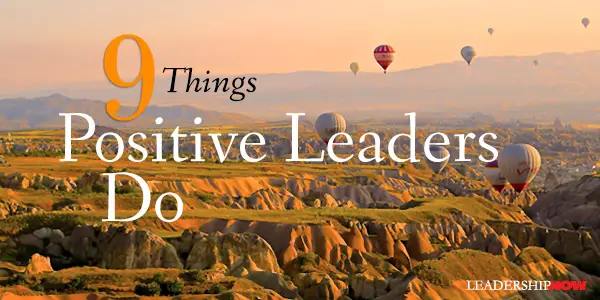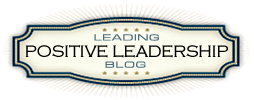 Leading Blog | Posts by Month |
 Leading Blog | Posts by Month |
06.30.17

LeadershipNow 140: June 2017 Compilation
See more on
Posted by Michael McKinney at 08:52 AM
06.28.17

4 Characteristics of Great Teams
T This year at the 35th America’s Cup in Bermuda, Team New Zealand beat the defending Oracle Team USA. What made their victory possible was a new team with a new approach. Great Teams Serve Each Other Team New Zealand operates as a team. Skipper Glenn Ashby said, “Everyone on this team is as important as the next guy. It’s a whole team policy where we have a belief in the collective power as a whole and not any one individual to get the job done.” A cyclor for New Zealand, Andy Maloney, added, "We pride ourselves on not everything being put into [skipper] Peter [Burling’s] or Glenn's hands. Whereas you see Jimmy Spithill and Tom Slingsby [of team Oracle] pretty much doing 99 percent of the work on the other boat.” When all members of the team serve each other through many small acts of service they balance out the whole team. Great Teams Maintain Their Composure and Focus Team New Zealand CEO Grant Dalton made an effort to stay behind the scenes. He also placed emphasis on the importance of the crew as a whole rather than individual team members. Team New Zealand believed they could win despite the odds and remain determined to do so despite the skeptics. Great Teams Overcome Adversity After their defeat four years ago, the New Zealand team was fractured and bitter. There was a lot of finger-pointing and some team members left. Skipper Glenn Ashby said, “It is very much a new team from 2013 across most departments and, as a result, we have a very healthy and fresh team culture.” They learned from 2013 and kept moving forward. They were able to tune out their critics. Great Teams Innovate Team New Zealand CEO Grant Dalton has said that the team almost folded due to lack of money. The board of directors came to the decision that they had no option but to shut the team down. Only a last minute influx of cash saved the team. But the lack of cash made them think and get creative with the resources they did have. They made a habit of doing things differently; operating at the margins. As a result, their innovations were a large part of their success. Specifically, they employed a revolutionary "cycling" system to power the hydraulics needed to control the catamaran's foils, which lift it out of the water, and the vast "wing" sail which drives it along. Great teams can set aside their limitations and innovate.
Posted by Michael McKinney at 12:15 AM
06.26.17

What Sets Apart the Greatest Teams of All-Time?
S Ironically, it wasn’t the Roy Keane’s or the Michael Jordan’s that made it happen. “The best leaders in sports history were not mesmerizing characters. They didn’t always make for great television. That’s what we’ve come to expect, however. So that’s what we continue to get.” And so teams choose the wrong people to lead them. They promote people with the wrong characteristics. It’s typically not the player with the highest market value. What it takes to lead is not always what it seems. What Walker discovered are the Seven Traits of Elite Captains. They explain why captains of exceptional teams are so influential. And it explains why we often look for the wrong kinds of leaders to lead us. 1. Extreme Doggedness and Focus in Competition Elite Captains just keep coming. They overcome a group dynamic known as social loafing. It’s what happens when a single person’s contribution to a team is not noticeable or unidentifiable. We put less effort in. An Elite Captain improves everyone else’s performance by leaving nothing in reserve themselves. Their willingness to give everything—all of the time—encourages the rest of the team to raise their effort level to match. 2. Aggressive Play That Tests the Limits of the Rules Elite Captains play the edges. Walker identifies a “hostile” variety of aggression to do harm and an “instrumental” variety that is used in pursuit of a worthwhile goal. “While the captains of Tier One often did ugly things, they did so while operating within the fuzzy confines of the rules of sports. (Although you can try to parse aggressive behavior and justify some but not all, it does matter how you win. Contrary to the examples of a couple of Walker’s Captains, winning at any cost is not a sustainable value.) 3. A Willingness to Do Thankless Jobs in the Shadows An Elite Captain serves. This finding is worth giving a little extra thought to. It is the person willing to carry the water that makes the best captain. “In fact, superior leadership is just as likely (if not more so) to come from the team’s rear quarters than to emanate from its frontline superstar.” Walker relates the story of the San Antonio Spur’s Tim Duncan. Duncan suppressed his own skills (and salary) in order to promote the goals and values of the team. “By lowering himself, he was able to coax the maximum performance out of the players around him.” Walker notes: “One of the great paradoxes of management is that the people who pursue leadership positions most ardently are often the wrong people for the job. They’re motivated by the prestige the role conveys rather than a desire to promote the goals and values of the organization.” 4. A Low-Key, Practical, and Democratic Communication Style Effective teams talk to one another and the person that fosters that culture is the captain. “They engaged with their teams constantly—listening, observing, and inserting themselves into every meaningful moment. They didn’t think of communication as a form of theater. They saw it as an unbroken flow of interactions, a never-ending parade of boxing ears, delivering hugs, and wiping noses.” 5. Motivates Others with Passionate Nonverbal Displays Jack Lambert of the Pittsburgh Steelers, went out of his way on the field “to project extreme passion and emotion.” This is distinct from verbal communication. Great captains project their feelings to have a strong impact on the thoughts, feelings and emotions of their teammates. Communication-based on displays rather than words. 6. Strong Convictions and The Courage to Stand Apart All of the Tier One captains stood up to management in some way in their careers. It served to bring the teammates closer together and cement their leadership. Some dissent is a good thing and captains should stand up for the team even at the risk of displeasing superiors. But they focus on task conflict and not personal conflict. “Tranquility isn’t more important than the truth—at least the kind that’s told by a captain who is known to be fiercely committed, who labors in the service of the team, and who avoids attacking people on a personal level.” 7. Ironclad Emotional Control Elite Captains have a kill switch; they are able to mute their personal emotional tendencies. Emotion and enable and it can disable. The Elite Captains walled off “destructive emotions in order to serve the interests of the team. They developed a kill switch for negative emotions.” What Does This Say About Leadership? Walker says we overcomplicate things. “We’ve been so busy scanning the horizon for transformational knights in shining armor that we’ve ignored the likelier truth: there are hundreds upon thousands of potentially transformative leaders right in our midst. We just lack the ability to recognize them.” We are often swayed by the force of a person’s personality or talent, but real leadership is not readily found on a resume. It’s found in the day-in and day-out activities that reveal who they are. The truth is that leadership is a ceaseless burden. It’s not something people should do for the self-reflected glory, or even because they have oodles of charisma or surpassing talent. It’s something they should do because they have the humility and fortitude to set aside the credit, and their own gratification and well-being, for the team—not just in pressure-packed moments but in every minute of every day. 
Posted by Michael McKinney at 01:00 AM
06.20.17

Humility is the New Smart: Are You Ready?
S Are you ready? The Smart Machine Age (SMA) will revolutionize how most of us live and work. In Humility is the New Smart, the authors state that “smart technologies will become ubiquitous, invading and changing many aspects of our professional and personal lives and in many ways challenging our fundamental beliefs about success, opportunity, and the American Dream.” This means that the “number and types of available jobs and required skills will turn our lives and our children’s lives upside down.” New skills will be needed. Uniquely human skills. Those skills, while uniquely human, are not what we are typically trained to do and require a deal of messy personal development. We will need to become better thinkers, listeners, relators, and collaborators while working to overcome our culture of obsessive individualism in order to thrive in the SMA. Humility is the mindset that will make all of this possible. Most of today’s adults have had no formal training in how to think, how to listen, how to learn and experiment through inquiry, how to emotionally engage, how to manage emotions, how to collaborate, or how to embrace mistakes as learning opportunities. In short, say the authors, we need to acquire and continually develop four fundamental NewSmart behaviors: Quieting Ego Quieting Ego has always been the challenge for us humans. As they observe, “Even if we don’t consider ourselves part of the ‘big me’ cultural phenomenon, for many of us to feel good about ourselves we have to constantly be ‘right,’ self-enhance, self-promote, and conceal our weaknesses, all of which drive ego defensiveness and failure intolerance that impedes higher-level thinking and relating.” This tendency negatively affects our behavior, thinking, and ability to relate to and engage with others. Managing Self—Thinking and Emotions We need to get above ourselves to see ourselves impartially. We all struggle “to self-regulate our basic humanity—our biases, fears, insecurities, and natural fight-flee-or-freeze response to stress and anxiety.” We need to be willing to treat all of our “beliefs (not values) as hypotheses subject to stress tests and modification by better data.” Negative emotions cause narrow-mindedness. Positive emotions, on the other hand, have been scientifically linked to “broader attention, open-mindedness, deeper focus, and more flexible thinking, all of which underlie creativity and innovative thinking.” Reflective Listening Because we are limited by our own thinking, we need to listen to others to “open our minds and, push past our biases and mental models, and mitigate self-absorption in order to collaborate and build better relationships.” The problem is “we’re just too wired to confirm what we already believe, and we feel too comfortable having a cohesive simple story of how our world works.” Listening to others helps to quiet our ego. Otherness To create these new behaviors and mindsets, it should become obvious that we need to enlist the help of others. “We can’t think, innovate, or relate at our best alone.” As Barbara Fredrickson observed, “nobody reaches his or her full potential in isolation.” Jane Dutton out it this way: “It seems to be another fact that no man can come to know himself except as the outcome of disclosing himself to another.” The NewSmart Organization Optimal human performance in the SMA will require an emphasis on the emotional aspects of critical thinking, creativity, innovation and engaging with others. “The work environment must be designed to reduce fears, insecurities, and other negative emotions.” To do this it means “providing people a feeling of being respected, held in positive regard, and listened to. It means creating opportunities for people to connect and build trust. “It means allocating time and designing work environments that bring people together to relate about nonwork matters.” Finally, it means getting to know employees and helping them to get the “right training or opportunities to develop and provide feedback.” The NewSmart organization needs to be a safe place to learn. “Feeling safe means that you feel that your boss your employer, and your colleagues will do you no harm as you try to learn.”  
Posted by Michael McKinney at 05:28 PM
06.09.17

9 Things Positive Leaders Do
J Positive leadership is grounded in reality. We must confront the negativity we come across, but we shouldn’t dwell on it. We deal with it and move on. It is because we will have to overcome negativity, adversity, and problems that we should be positive. “Positive leadership is not about fake positivity. It is the real stuff that makes great leaders great.” Positive leaders focus on solutions. Gordon cites psychologist Barbara Fredrickson’s research that finds that “people who experience more positive emotions than negative ones are more likely to see the bigger picture, build relationships, and thrive in their work and career, whereas people who experience mostly negative emotions are more likely to have a narrower perspective and tend to focus more on problems.” Positivity doesn’t guarantee you will succeed, but it makes it much more likely. A positive mindset reveals possibilities and gives you the courage to take the actions required to move past negative situations. Gordon explains nine things positive leaders do. Nine actions that will enhance your leadership capabilities and positively impact all of your relationship—your family, your friends and your team. 1. Positive Leaders Drive Positive Cultures Culture is everything. A positive leader lives the culture because it is an extension of who they are. “They understand that every day there are forces seeking to sabotage their culture and success, and so they work relentlessly to keep it strong.” “When you create a culture worth fighting for and invest in your people to the degree that they want to fight for your culture and for each other, your organization will have grit and strength to overcome the challenges you face and become an unstoppable and positive force.” 2. Positive Leaders Create and Share a Positive Vision Former President and Chief Executive Officer of the Ford Motor Company Alan Mulally, said, “Positive leadership—conveying the idea that there is always a way forward—is so important because that is what you are here for—to figure out how to move the organization forward.” Positive leaders see and create a brighter and better future. They see “what’s possible and then take the next steps to rally and unite people to create it. Every invention, project, creation, and transformation starts with an idea, an imagination, and a vision of what’s possible.” A positive leader needs a telescope and a microscope. The telescope helps to keep your eyes on the big picture. The microscope helps the leader to focus in on what needs to be accomplished in the short term to realize the vision in the telescope. “If you only have a telescope, then you’ll be thinking about your vision all the time and dreaming about the future but not taking the necessary steps to realize it. If you only have a microscope, then you’ll be working hard every day but set-backs and challenges will likely frustrate and discourage you because you’ll lose sight of the big picture.” 3. Positive Leaders Lead with Optimism, Positivity, and Belief “Ultimately, being a positive leader is all about leading with faith in a world filled with cynicism, negativity, and fear.” We all face this battle between faith and fear. A leader’s job is to fill your people with faith. How we respond to our world depends on the stories we tell ourselves. When you face adversity you can tell a positive story and then work to create a positive outcome. It’s always your state of mind and your thinking that produces how you feel and respond. When you see that the world has no power over you, you will lead more powerfully in the world.” 4. Positive Leaders Confront, Transform, and Remove Negativity “Positive leadership is not just about feeding the positive, but also about weeding out the negative.” You must address negativity. Develop a culture where negativity is not acceptable. People will either change or leave. A positive leader is more positive than the negativity they face. Every negative situation is an opportunity the strengthen your positivity. Don’t allow complaining unless one or two possible solutions are brought forward also. “Complaining causes you and your team to focus on everything but being your best.” 5. Positive Leaders Create United and Connected Teams “Positive leaders unite instead of divide. They are able to create unity, which is the difference between a great team and an average team.” It starts at the top. “As a positive leader, you must be a unifier and connector who fosters relationships between others.” “You can be the smartest person in the room but if you fail to connect with others you will fail as a leader.” Also, “You may not have the most talented people on your team, but if you are a connected team, you will outperform many talented teams who lack a close bond.” 6. Positive Leaders Build Great Relationships and Teams People first follow who you are. “Leadership begins with love.” Love your people. Build relationships first. Too many leaders share rules before they have first built a relationship. I’ve had many leaders tell me,” writes Gordon, “that when they focus less on rules and invest more in their relationships they experience a dramatic increase in performance, morale, and engagement.” Positive leaders are also positive communicators. They smile. They spread positive gossip. They listen and welcome ideas. They rely on positive non-verbal communication. They encourage. 7. Positive Leaders Pursue Excellence Not satisfied with the status quo, positive leaders pursue excellence. “How can I get better to make the world better?” Positive leaders are humble and never stop learning. Pablo Casals, one of the greatest cellists of all time, was asked why he continued to practice the cello at the age of 95. He said, “Because I think I’m making progress.” Positive leaders ask daily: “What do I need to know that I don’t know?” and “What do I need to unlearn to learn?” 8. Positive Leaders Lead with Purpose Purpose fuels positivity. “Hard work doesn’t make us tired. A lack of purpose is what makes us tired. We don’t get burned out because of what we do. We get burned out because we forget why we do it.” Have purpose-driven goals. “The truth is that numbers and goals don’t drive people. People with a purpose drive the numbers and achieve goals.” 9. Positive Leaders Have Grit “When we look at successful companies and organizations, we see their current success and prominence but what we don’t see is the leadership and grit that powered them through all the failure and moments of doubt, heartache, fear, and pain.” Positive leaders embrace failure and trust the process. “Leadership is knowing the critics will criticize you while still saying what needs to be said and doing what needs to be done.” Positive leadership is a choice. Through great stories, Gordon encourages you to make a positive difference as a leader. 

Posted by Michael McKinney at 08:58 AM
06.05.17

How to Avoid Your Leadership Gap
T In The Leadership Gap, Lolly Daskal addresses this gap—what it is, why it happens, and what we can do about it. The gap is always there but at some point, it comes the surface to sabotage us. What if we don’t know what we think we know? The problem is that one day, suddenly, what once worked so well to propel their rise stops working. And the very same traits that had worked for them actually start working against them. It is at this point that we need to begin asking ourselves some questions. “What is the gap between who I am and who I want to be, and do I know what it is I still need to learn?” In short, “Who am I being?” We need to rethink how our behaviors are perceived by those around us. And when there is that gap between how we want to be perceived and how we are actually being perceived, we need to take action. “Learning to recognize your leadership gap is the factor that determines your greatness as a leader.” Sometimes we overuse a strength and sometimes we drift into the shadow side of our strengths. Either way, an understanding of what drives can give us the insight we need to avoid our leadership gaps. Daskal invites us to look at who we are being and the instincts that drive our behaviors. The “shadow” you. She has developed seven leadership archetypes to help us gain some clarity as to what drives our beliefs and therefore our behaviors. We aren’t necessarily one type as we tend to shift from one to another depending on the circumstances but “we tend to lean repeatedly toward the same archetype persona.” The Seven Archetypes
Daskal reminds us that understanding our weaknesses is our greatest strength. From these seven archetypes, we can see how each has powerful abilities and hidden impediments. By knowing the gaps we can get into we can better use our strengths to achieve our own leadership greatness. Daskal explains each of these archetypes in detail and importantly how we avoid these gaps. She describes what the positive looks like and what the negative looks like with examples for each. The Leadership Gap provides the antidote for leading on autopilot. Daskal provides insight into our behaviors and beliefs that can if not managed properly can derail even the most talented and successful leaders. Confronting and avoiding our leadership gaps is the key to attaining long-term leadership success. 
Posted by Michael McKinney at 03:03 PM
06.01.17

First Look: Leadership Books for June 2017Here's a look at some of the best leadership books to be released in June.    
For bulk orders call 1-800-423-8273  Build your leadership library with these specials on over 39 titles. All titles are at least 40% off the list price and are available only in limited quantities. "A room without books is like a body without a soul.” — Marcus Tullius Cicero
Posted by Michael McKinney at 08:50 AM
|
BUILD YOUR KNOWLEDGE


How to Do Your Start-Up Right STRAIGHT TALK FOR START-UPS 
Grow Your Leadership Skills NEW AND UPCOMING LEADERSHIP BOOKS 
Leadership Minute BITE-SIZE CONCEPTS YOU CAN CHEW ON 
Classic Leadership Books BOOKS TO READ BEFORE YOU LEAD |
|